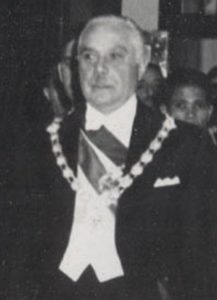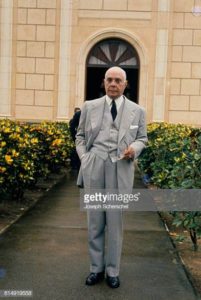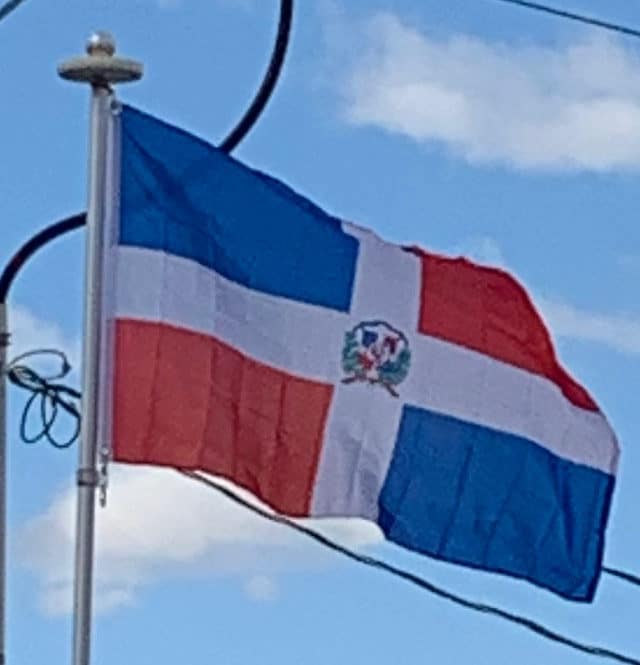During the government of Horacio Vásquez, Rafael Trujillo held the rank of lieutenant colonel and was chief of police. This position helped him launch his plans to overthrow the government of Vásquez. Trujillo had the support of Carlos Rosario Peña, who formed the Civic Movement, which had as its main objective to overthrow the government of Vásquez.

In February 1930, when Vásquez attempted to win another term, his opponents rebelled in secret alliance with the commander of the National Army (the former National Guard), General Rafael Leonidas Trujillo Molina. Trujillo secretly cut a deal with rebel leader Rafael Estrella Ureña; in return for letting Ureña take power, Trujillo would be allowed to run for president in new elections. As the rebels marched toward Santo Domingo, Vásquez ordered Trujillo to suppress them. However, feigning “neutrality,” Trujillo kept his men in barracks, allowing Ureña’s rebels to take the capital virtually uncontested. On March 3, Ureña was proclaimed acting president with Trujillo confirmed as head of the police and the army.
As per their agreement, Trujillo became the presidential nominee of the newly formed Patriotic Coalition of Citizens (Spanish: Coalición patriotica de los ciudadanos), with Ureña as his running mate. During the election campaign, Trujillo used the army to unleash his repression, forcing his opponents to withdraw from the race. Trujillo stood to elect himself, and in May he was elected president virtually unopposed after a violent campaign against his opponents, ascending to power on August 16, 1930.
Trujillo Age (1930–61):
There was considerable economic growth during Rafael Trujillo’s long and iron-fisted regime, although a great deal of the wealth was taken by the dictator and other regime elements. There was progress in healthcare, education, and transportation, with the building of hospitals and clinics, schools, and roads and harbors. Trujillo also carried out an important housing construction program and instituted a pension plan. He finally negotiated an undisputed border with Haiti in 1935 and achieved the end of the 50-year customs agreement in 1941, instead of 1956. He made the country debt-free in 1947.

This was accompanied by absolute repression and the copious use of murder, torture, and terrorist methods against the opposition. Trujillo renamed Santo Domingo to “Ciudad Trujillo” (Trujillo City), the nation’s – and the Caribbean’s – highest mountain La Pelona Grande (Spanish for: The Great Bald) to “Pico Trujillo” (Spanish for: Trujillo Peak), and many towns and a province. Some other places he renamed after members of his family. By the end of his first term in 1934 he was the country’s wealthiest person, and one of the wealthiest in the world by the early 1950s; near the end of his regime his fortune was an estimated $800 million. He used the secret police extensively to eliminate political opposition and to prevent several coup attempts during and after World War II. The secret police allegedly murdered more than 500,000 people during the Trujillo era.
Although one-quarter Haitian, Trujillo promoted propaganda against them. In 1937, he ordered what became known as the Parsley Massacre or, in the Dominican Republic, as El Corte (The Cutting), directing the army to kill Haitians living on the Dominican side of the border. The army killed an estimated 17,000 to 35,000 Haitian men, women, and children over six days, from the night of October 2, 1937, through October 8, 1937. To avoid leaving evidence of the army’s involvement, the soldiers used edged weapons rather than guns. The soldiers were said to have interrogated anyone with dark skin, using the shibboleth perejil (parsley) to distinguish Haitians from Afro-Dominicans when necessary; the ‘r’ of perejil was of difficult pronunciation for Haitians. As a result of the massacre, the Dominican Republic agreed to pay Haiti US$750,000, later reduced to US$525,000. In 1938, reports from the Dominican Republic revealed hundreds more Haitians had been killed and thousands deported.
